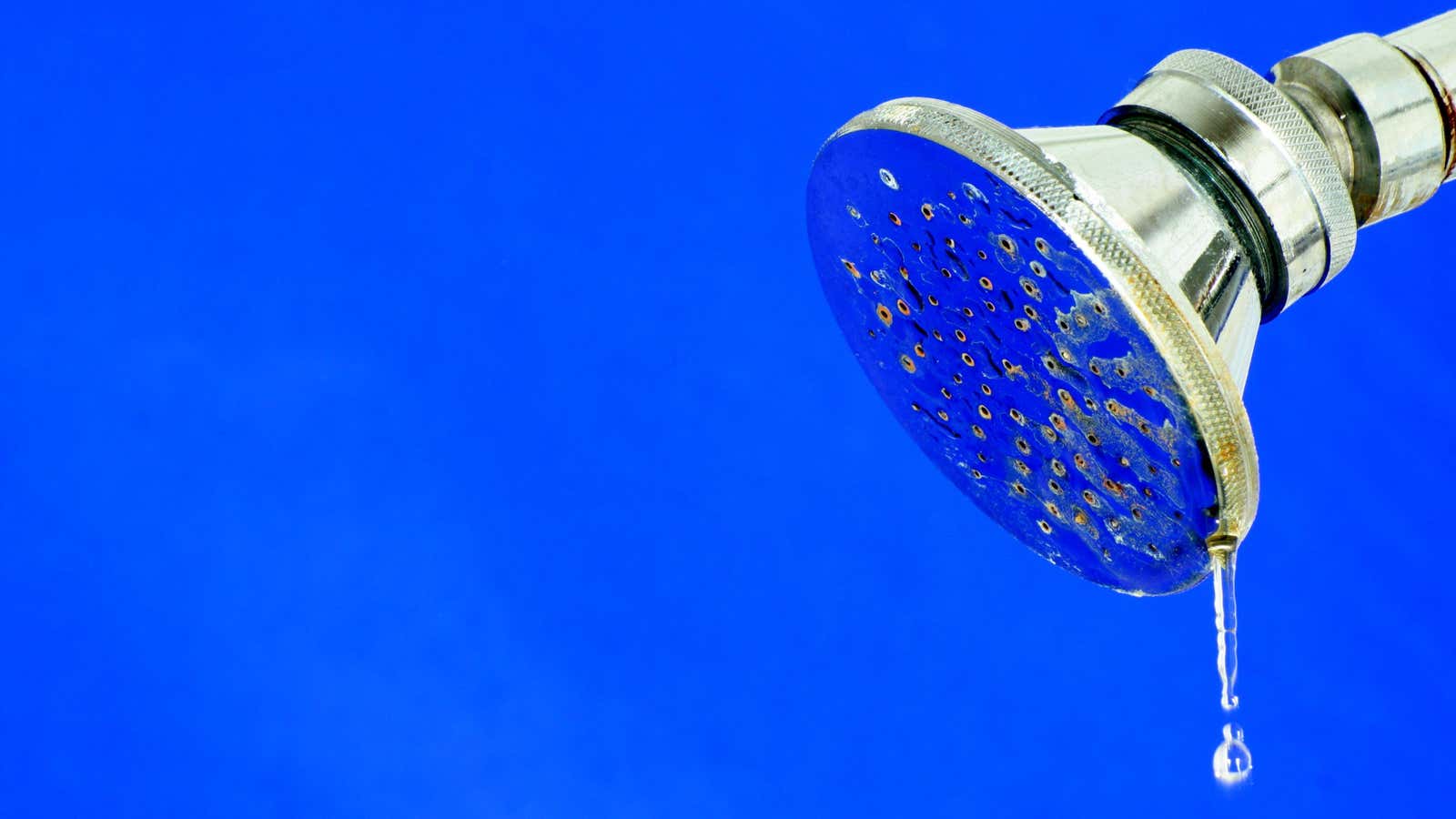How to Understand Why You Have Low Water Pressure (and Fix It)

Cooking, washing dishes and bathing are all difficult when the water is running from the faucet in a trickle. While you might think that low water pressure would be a very difficult problem to deal with, it can actually often be solved with a few simple fixes. The trick is to find the cause of your water pressure problems first; this will help you determine how serious the problem is and whether you need to call in experts. Here’s where to start.
Check with your water utility
If the water pressure has dropped throughout the house, the first thing to do is to call the local water supply. Visit their website or give them a call to see if they do flush or repair work in your area. Sometimes, if there is a problem with the plumbing, the water pressure can be temporarily reduced. If this is not the case and there is no obvious flooding, do other basic checks before giving up and calling a plumber.
Check all valves
Low water pressure may be caused by a partially closed valve. This is by far the easiest thing to solve. Starting with a water meter, usually located outside your home on an outside wall or under a closed curb opening, check to see if the valves are open. If the valve has a lever, it must be parallel to the pipe. If it is partially closed, this may be the answer to your problem. Then install check valves in your home. Somewhere in the basement, utility room, or near the washing machine connection, there should be a main shut-off valve. This valve will either be in the form of a lever, like your external shutter, or in the form of a handle. Turn the handle counterclockwise or turn the lever parallel to the pipe to open things. If the problem with water pressure is localized in one faucet, check the valves there, usually under the sink.
Check for leaks
If valves are not your problem, you may have a leak. This problem will be obvious if there is dampness or a puddle of water where it doesn’t belong, but sometimes you can have a slow leak from a small crack that is harder to see. One way to determine this is to read the water meter when all taps and appliances that use water are turned off. Leave them on and then take another measurement a few hours later. If additional water consumption is recorded, then you have a leak somewhere. Check everything you can think of (and a few places that don’t make sense) for moisture and water damage. Once you find a slow leak, you can potentially fix it yourself if the problem is small. In most hardware stores, you can find a pipe repair kit or epoxy for plumbers who can take care of urgent repairs. After your repair is done, the plumber still needs to do professional-level work, but a temporary patch can save you from paying emergency plumbing rates.
Troubleshooting other problems
Once the most common problem areas have been ruled out, consider if there might not be too much demand for the amount of water entering the home, which can be mitigated by alternating when you use water for dishwashers, laundry, and showers so they don’t overlap . Another common cause of low water pressure is a buildup of minerals in your pipes, which can be solved by treating them with vinegar or flushing them out by a professional plumber. This is more common in “hard” water areas where there are higher concentrations of minerals such as calcium in drinking water.
Clean water pipes from scale
To “descale” or flush your own pipes, turn off the water heater or, for a gas water heater, set the flame setting to pilot and then close the water valve going to the water heater. Connect a garden hose to the valve at the base of the water heater tank and drain about two gallons of water. Close the faucet and pour two gallons of vinegar back into the top of the tank. Return the tank to default settings and leave it overnight. In the morning, open all hot water taps for a few minutes. If water pressure is not restored after performing this type of flush, it is time to call a professional; deposits in your pipes may be due to corrosion rather than mineral buildup, which may require some pipes to be replaced (sorry).